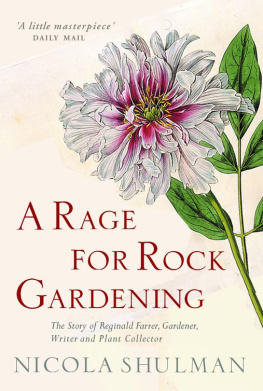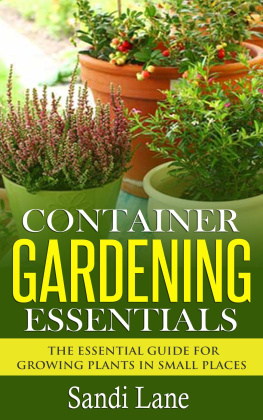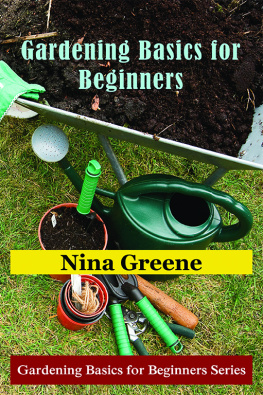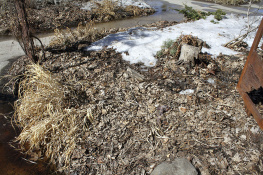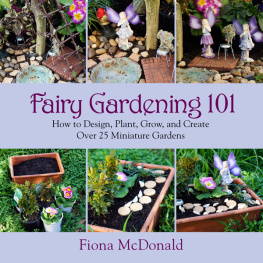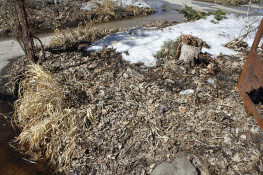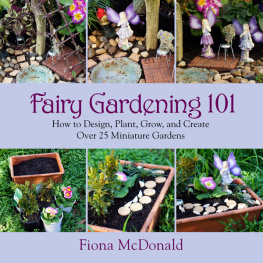Praise forA Gentle Pleas for Chaos
The most original book of the year, and the most deliciously written
Daily Telegraph
A richly satisfying book I urge you to make it a reading imperative
Horticulture
A compulsive read it restored my joy in gardening
Country Homes & Interiors
She philosophises about gardens in language so rich and wry that you can hear her voice and smell the roses
Sunday Express
Here is a truly unconventional and beguiling writer
Hortus
A writer in love with language as much as with her garden and its wayward plants which die on her or grow in the wrong direction. Her opinionated idiosyncrasy I find irresistible. This is gardening as a tempestuous, angry love affair
Sir Roy Strong
This is gardening autobiography that makes the reader feel like an eavesdropper, privy to the confessions of the analysts couch
World of Interiors
MIRABEL OSLER is the critically acclaimed author of A Breath from Elsewhere and most recently, her memoir The Rain Tree. She lives in Shropshire.
A Gentle Plea for Chaos
MIRABEL OSLER


This electronic edition published in 2012 by Bloomsbury Publishing Plc
First published in Great Britain 1989
Copyright 1989 by Mirabel Osler
The moral right of the author has been asserted
All rights reserved
You may not copy, distribute, transmit, reproduce or otherwise make available this publication (or any part of it) in any form, or by any means (including without limitation electronic, digital, optical, mechanical, photocopying, printing, recording or otherwise), without the prior written permission of the publisher. Any person who does any unauthorised act in relation to this publication may be liable to criminal prosecution and civil claims for damages
A Word about Havoc () under the title Back Gardens
Engravings by Howard Phipps
Bloomsbury Publishing Plc
50 Bedford Square,
London, WC1B 3DP
A CIP catalogue record for this book is available from the British Library
eISBN: 9781408837139
Visit www.bloomsbury.com to find out more about our authors and their books
You will find extracts, author interviews, author events and you can sign up for newsletters to be the first to hear about our latest releases and special offers
For Eve Auchincloss
Contents
Chapter 1
A Compulsion for Trees

When the ice of winter holds the house in its rigid grip, when curtains are drawn early against that vast frozen waste of landscape, almost like a hibernating hedgehog I relish the security of being withdrawn from all that summer ferment that is long since past. Then is the time for reappraisal: to spread out, limp and receptive, and let garden thoughts rise to the surface. They emerge from some deep source of stillness which the very fact of winter has released.
This is the alchemy of gardens. For I have come to understand that gardening is not just a putting into the earth of some frail greenery, but like a stone thrown into a pond, garden thoughts ripple outwards towards a limitless horizon. What are gardens? Who are gardeners? Where does the thrust to make places of beauty, secrecy or seclusion come from? Who were the first? And what intricacies are we led into from the sheer chance of planting a seed in the earth?
So I imagine up and down the country during these blessed months of short days and long nights, a whole self-seeding of gardeners, with backs unbent, having put aside their boots, trowels and twine, who can now have time to let their thoughts hang out: a time when everything is possible. Who doesnt make lists then? Heady, wild and totally outrageous ideas can be brought into line, maybe only momentarily, before they are banished as unrealistic. It is the season for minds sharp as blades agile and springing from one extravagant thought to another.
You dont have to garden to garden; gardening in the mind is a gentle vice with an impetus of its own; it may not be as potent as actually making one, but there is a whole different threshold where gardening in the head can fill our winter tranquillity with unrest. What gardener can condemn this as a time of stagnation?
Books and catalogues come into their own in winter. Not only those on How To, but those filled with plans and pictures; books by inspired gardeners who have been at it for years and reassure us of how easy it is, and who lead us through labyrinths of scented borders, classic design, potagers and pleached alles. Or pick up one of those superb books such as PrivateGardens of England, by Penelope Hobhouse, on a wild, wet afternoon in February when the wind is shrilling outside, moaning through the gaps and spattering the window with rain. Turn to a picture of Saling Hall showing blues and silvers against the static severity of evergreens, or see the black and white photograph of roses, cobbles and fennel at Chilcombe, in which theres a table and chair glimpsed through an open door in the garden wall. Books such as these are indeed a strong element of the whole pleasure of gardening; they need to be devoured and mulled over as well as those which are carried round in an earthy hand as vital advice flows out on what to do with five hundred slugs at the delphiniums.
Each year the choice of gardening books in print seems to multiply from those with such evocative titles as Plant Hunting on the Edge of the World to A Brocade Pillow Azaleas of Old Japan. Intriguing as they sound I know I shall never be aroused by Succulents, nor will I Know Your Woody Plant.
This book does not offer helpful advice, rather it is a collection of ideas originating from making a garden, some of which perhaps are shared by others who, in winter, or on their knees in summer, have time to ruminate on the infinity of gardens. In a way this is the anti-gardening gardeners book. Yet thats too glib, too simplified. What I want to do is to let in a cold blast of high altitude air to make some gardeners gasp from either indignation or pique or, better still, agreement. These garden thoughts have sprouted while Ive been dead-heading roses, visiting gardens or buying a pair of socks. No matter from where, the creativeness of gardens must have plagued men and women for centuries. But trying to tie down such random ideas is like trying to constrain that wayward clematis, Etoile Violette, with her capricious tendrils which reach everywhere.
There are many fascinating or rarefied aspects that I have not pursued though Id like to, such as secret gardens, plant fossils, John Evelyn or orangeries; others are too academic or scholarly: medicinal plants and the whole wide territory of garden design. Instead I have taken the five major aspects of our own garden which have had the most forceful effect on its layout. I have divided the book into chapters: Trees, Water, Walls, Roses and Bulbs. The themes around these five subjects are arbitrary; their sole reason for being included is that they have each originated since 1980 when we first began to make the garden. Without that incentive not a single garden thought would have infiltrated my mind.
Next page


